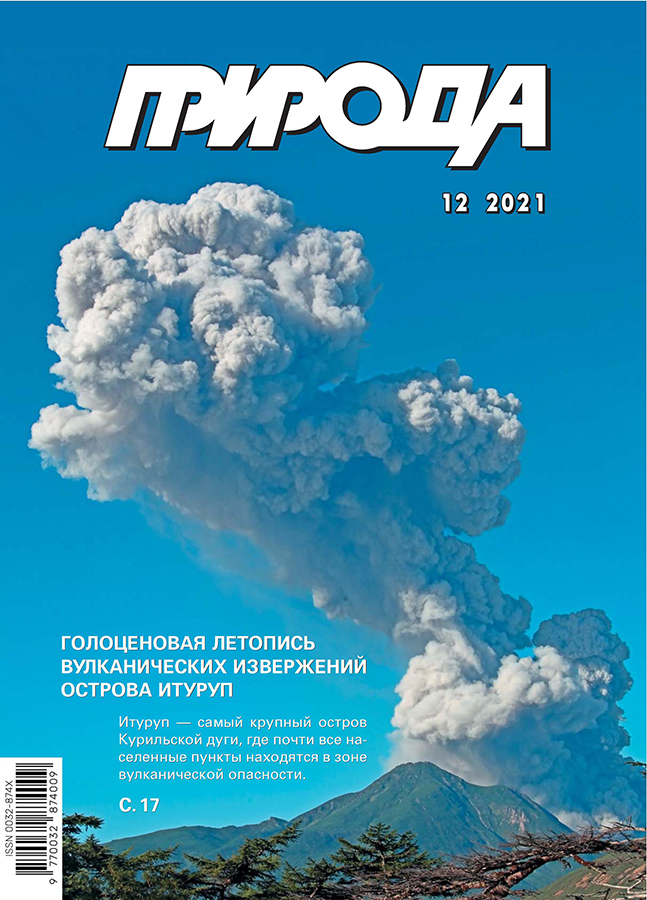Compositional Asymmetry of the Moon
- 作者: Demidova S.I1
-
隶属关系:
- Vernadsky Institute of Geochemistry and Analytical Chemistry, RAS
- 期: 编号 12 (2021)
- 页面: 3-11
- 栏目: Articles
- URL: https://journals.eco-vector.com/0032-874X/article/view/628083
- DOI: https://doi.org/10.7868/S0032874X21120012
- ID: 628083
如何引用文章
详细
The earliest orbital observations have shown that the Moon has global asymmetry between its nearside and farside. The main differences are in topography, crustal thickness, and distribution of mare and highland areas. These asymmetries are thought to be a result of very early geological processes caused either by internal inhomogeneity and related thermochemical processes or by giant impact event(s). The evidence of both is present on the Moon surface. A joint analysis of the available data on the composition of lunar samples and meteorites and global geochemical and mineralogical mapping confirmed the existence of differences in the composition of the Moon’s nearside and farside. However, it is still impossible to unambiguously conclude about the origin of global asymmetry.
作者简介
S. Demidova
Vernadsky Institute of Geochemistry and Analytical Chemistry, RAS
Email: demidova.si@yandex.ru
Moscow, Russia
参考
- Warren P.H., Taylor G.J. The Moon. Planets, Asteriods, Comets and the Solar System. Treatise on Geochemistry (Second Edition). H.D.Holland, K.K.Turekian (eds.). Vol.2. 2014; 213–250.
- Jolliff B.L., Gillis J.J., Haskin L.A. et al. Major lunar crustal terranes: Surface expressions and crust-mantle origins. J. Geophys. Res. 2000; 105: 4197–4216.
- Gillis J.J., Jolliff B.L., Korotev R.L. Lunar surface geochemistry: Global concentrations of Th, K, and FeO as derived from lunar prospector and Clementine data. Geochim. Cosmochim. Acta. 2004; 68: 3791–3805.
- Glotch T.D., Lucey P.G., Bandfield J.L. et al. Highly Silicic Compositions on the Moon. Science. 2010; 329: 1510–1513.
- Yamamoto S., Nakamura R., Matsunaga T. et al. Possible mantle origin of olivine around lunar impact basins detected by SELENE. Nat. Geosci. 2010; 3: 533–536.
- Yamamoto S., Nakamura R., Matsunaga T. et al. Massive layer of pure anorthosite on the Moon. Geophys. Res. Lett. 2012; 39: L13201. doi: 10.1029/2012GL052098.
- Che X., Nemchin A., Liu D. et al. Age and composition of young basalts on the Moon, measured from samples returned by Chang’e-5. Science. 2021; 374(6569): 887–890. doi: 10.1126/science.abl7957.
- Wieczorek M.A. The crust of the Moon as seen by GRAIL. Science. 2013; 339: 671–675.
- Sokol A.K., Fernandes V.A., Schultz T. et al. Geochemistry, petrology and ages of the lunar meteorites Kalahari 008 and 009: New constraints on early lunar evolution. Geochimica et Cosmochimica Acta. 2008; 72: 4845–4873.
- Кусков О.Л., Кронрод Е.В., Кронрод В.А. Влияние термального состояния на химический состав мантии и размеры ядра Луны. Геохимия. 2019; 64(6): 567–584.
- Ohtake М., Matsunaga T., Haruyama J. et al. The global distribution of pure anorthosite on the Moon. Nature. 2009; 461: 236–241.
- Назаров М.А., Аранович Л.Я., Демидова С.И. и др. Алюмоэнстатиты лунных метеоритов и глубинные породы Луны. Петрология. 2011; 19(1): 14–26. doi: 10.1134/S0869591111010061.
- Nakamura R., Yamamoto S., Matsunaga T. et al. Compositional evidence for an impact origin of the Moon’s Procellarum basin. Nature Geoscience. 2012; 5: 775–778.
- Zhu M., Wünnemann K., Potter R.W.K et al. Are the Moon’s nearside-farside asymmetries the result of a giant impact? J. of Geophysical Research. 2019; 124(8): 2117–2140. doi: 10.1029/2018JE005826.
补充文件








